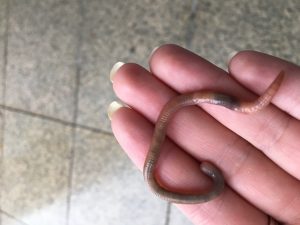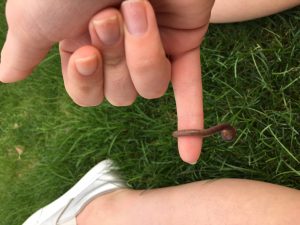Hello Writing Natural History blog followers!
Last Tuesday night on my rainy, late-night walk home from the library, I encountered a horde of worms outside GDX. I was very excited to see these earthworms because we had just talked about Charles Darwin and his studies of worms. Some of the ones I observed were very long, and others were shorter, however, the smaller earthworms are more effective at burrowing due to their relative body mass to force ratio (Encyclopedia of Life).
In class, we learned that worms are very important in the fertilization of soil, and according to the Encyclopedia of Life, this is because they take the top layers of soil down into their burrows, taking in oxygen and secreting soil (‘worm casts’). This process requires worms to keep their skin wet, which is why I saw them on the wet sidewalk.
The next morning outside the library by Novack, not too far from where I had seen the worms the previous night, I saw more worms! This time, I decided to pick one up. It was soft, not slimy, and not very gross at all. Whereas the night before the worms looked pale pink, in the daylight, I observed that the worm was multi-colored, with lighter and darker brown regions and pale pink as well. Its body is divided by rings called annuli (Encyclopedia of Life) that appear to be farther apart towards the worms’ skinny end, the tail.
And if I had not had my share of encounters with worms, I saw another one yesterday for good measure, crawling in the grass on Baker lawn. I also picked this one up, but it was not as soft because the grass was not wet. The worm curled up in my hand, showing off its flexible, cylindrical body, perfect for burrowing and inching through tiny spaces.
I would highly recommend meeting one of these creatures to thank them for their work in fertilizing our soil and to follow in the great naturalist’s footsteps!
~enjoying the worms, Libby~



